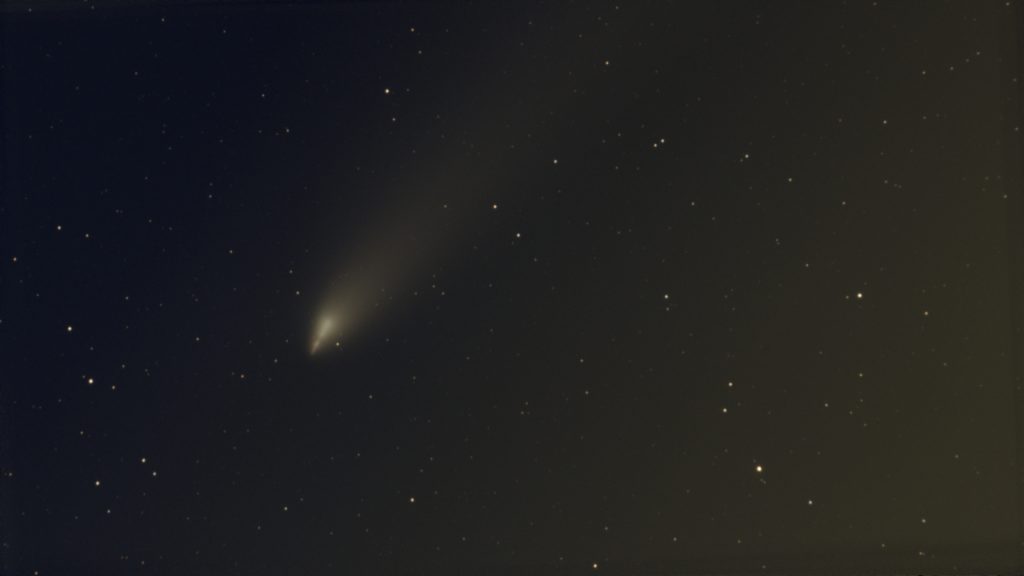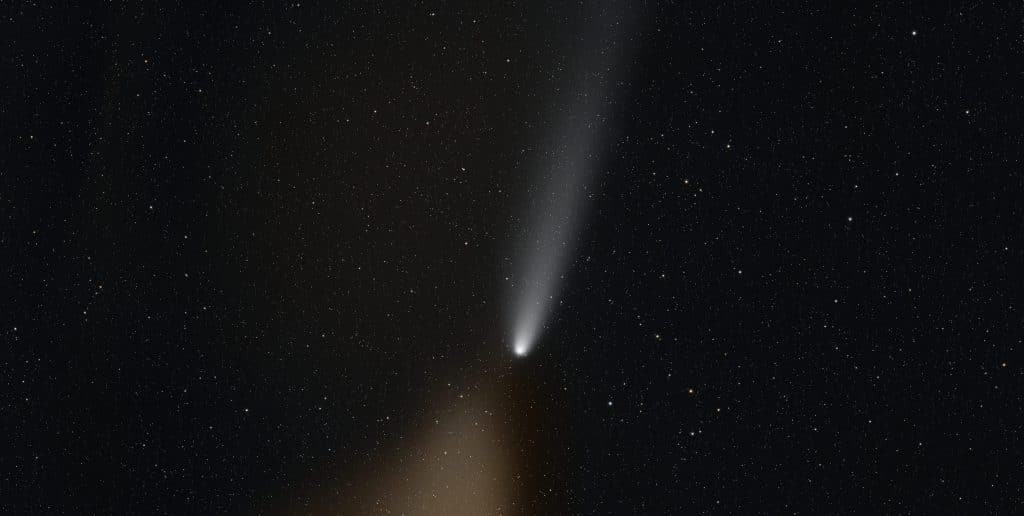Table of Contents
This time I was out hunting for an object that has been all over the internet. The object was of cause the amazing comet C/2023 A3 Tsuchinshan-ATLAS. This comet was expected to be one of the most stunning views of 2024. The experience of observing a comet right from the backyard was amazing. Luckily I am fortunate enough to live under Bortle 4 skies which meant that I was able to see the comet unaided
Observing Comet C/2023 A3
The art of observing a comet is tricky since the comet moves very fast compared to the background, making the observations difficult. It is also very difficult because you need to decide whether to track the comet’s core or the background stars. The first bit is very tricky, so since this was my first go at a comet, I decided to track the background stars. This process has some resemblance to the process of taking an ordinary astrophotography.
The next thing to work on is the exposure time. Since the comet’s core is very bright one can run into issues, with overexposure. Hence I decided to go for an exposure time of 60 seconds.
The comet observed with a SeeStar S50 telescope
Besides my main rig, this night I was testing a ZWO SeeStar S50 as well. This is an excellent little device but it had some difficulties tracking and sticking the comet. As I expected, the final image that I got with the SeeStar S50 suffered a great deal from light pollution. See the image below.

In this image the core of the comet is not at all round but more shaped like an arrow. Furthermore the stars are a bit fuzzy – but for the first attempt with the SeeStar S50 I find it to be really cool.
C/2023 A3 – With the Nikon and the Askar 71F
Alongside the SeeStar S50 I had my trusty Askar/Nikon combo set up on the Sky-Watcher – Star Adventurer GTi. Here I managed to get 29 subframes with a minute of exposure time each, reaching a total of 29 minutes. Besides this, I recorded flats, darks and bias-frames. If you look at my result at the bottom of the page you will see that I have a cone of yellowish light coming from just below the comet, this is a result of the comet core getting to close to a street light.
Processing the image
Here I had great help from YouTube videos, especially from Hidden Light Photography. The way Tony from Hidden Light Photography presents the topic of creating a beautiful image out of your comet data is excellent. After processing the image I ended with the result below.

Where is the comet now?
According to the Seti institute did not disappoint, with the internet feeds blooming with posts of comet photos throughout October it has been a blast. Now the comet continues its journey to the edges of our solar system again, and we can look forward to the next visit from the comet C/2023 A3 Tsuchinshan-ATLAS in 80000 years from now. Following the third law of Kepler that means that the
\frac{a^{3}}{T^{2}}= G\cdot\frac{Mm}{4\pi^2}In appropriate units it follows that
a^{3} = T^2 Hence we can work out half the major axis of the orbit
a_{\mathrm{C/2024~A3}}=\sqrt[3]{T^{2}} = \sqrt[3]{(80000~\mathrm{yr})^2} = 1867~\mathrm{AU} = 2.79\times 10^{11}~\mathrm{km}This is the semi-major axis of the orbit of the comet. As a comparison is the semi-major axis of the orbit of Earth and Neptune are only
a_{\mathrm{Earth}}=1.50\times 10^{8}~\mathrm{km}\qquad \& \qquad a_{\mathrm{Neptune}} = 4.5\times 10^{9}~\mathrm{km}Hence the Comet C/2023 A3 will extend more than 62 times beyond the orbit of Neptune. So until next time clear skies and bon voyage C/2023 A3.

